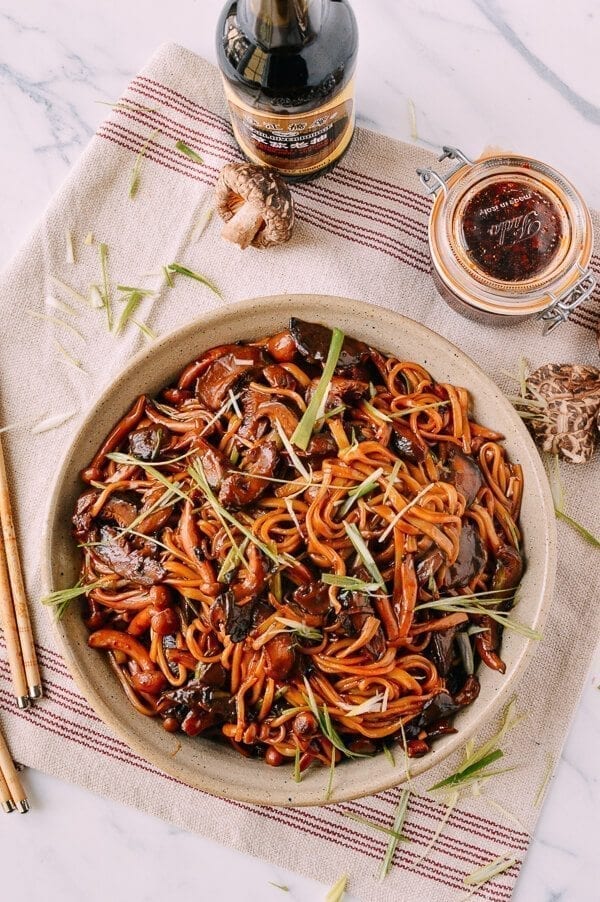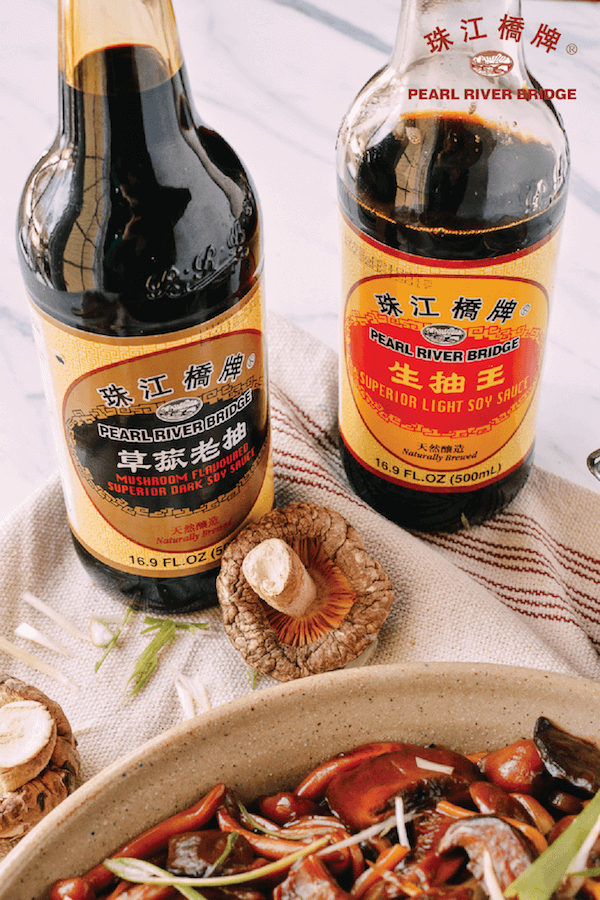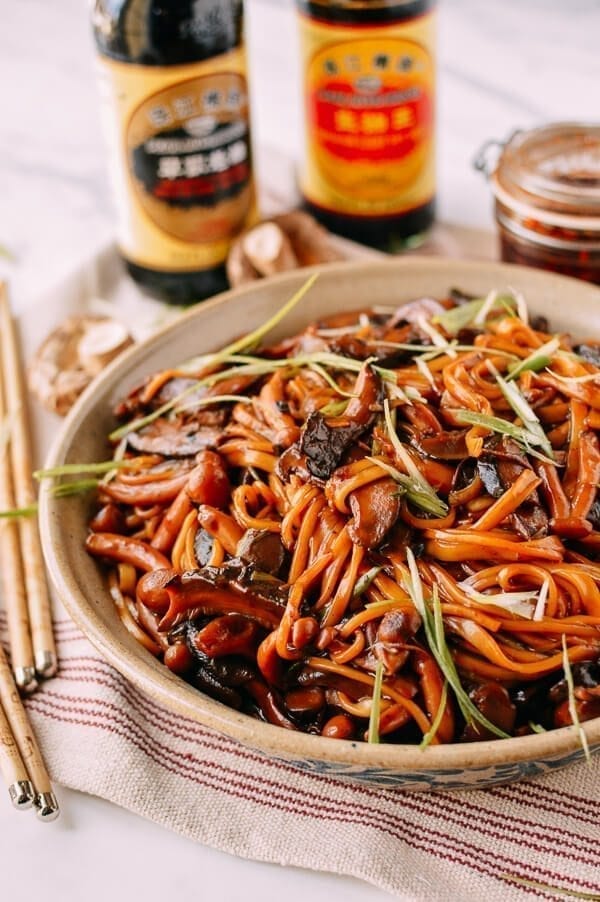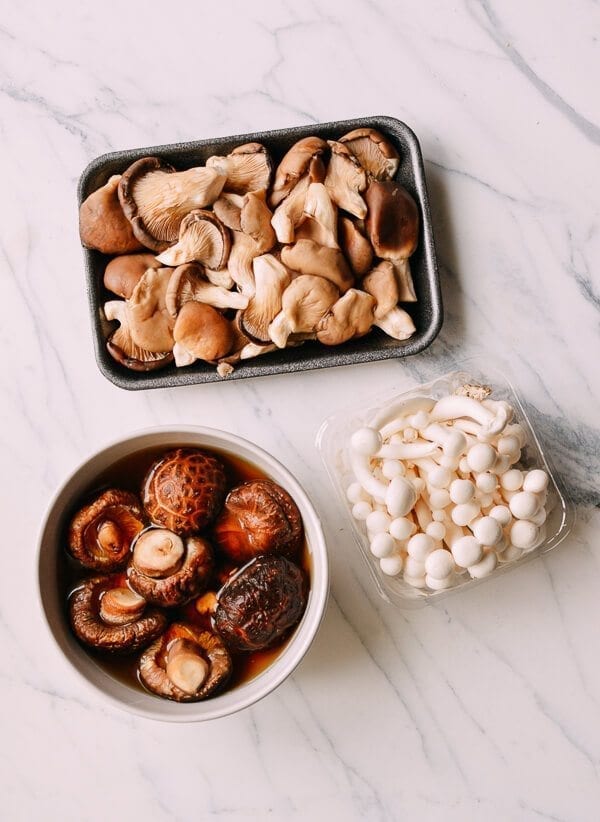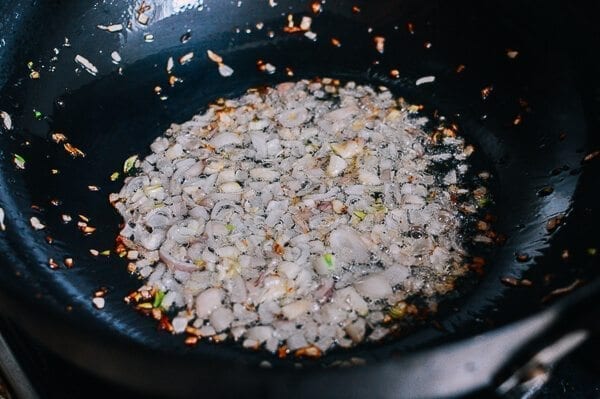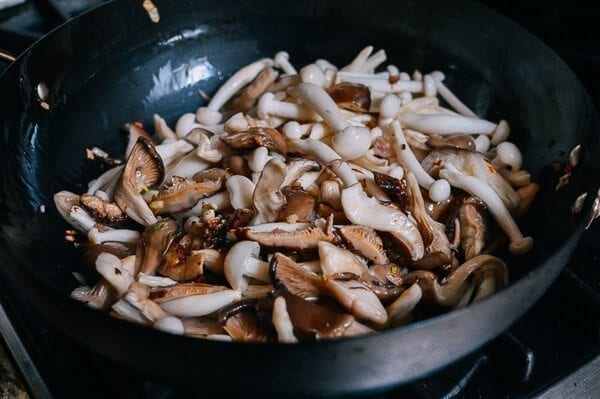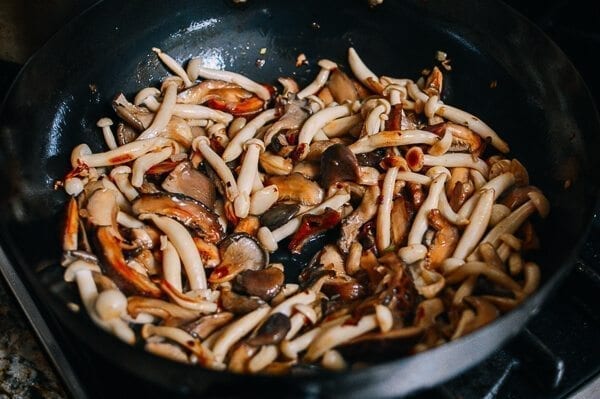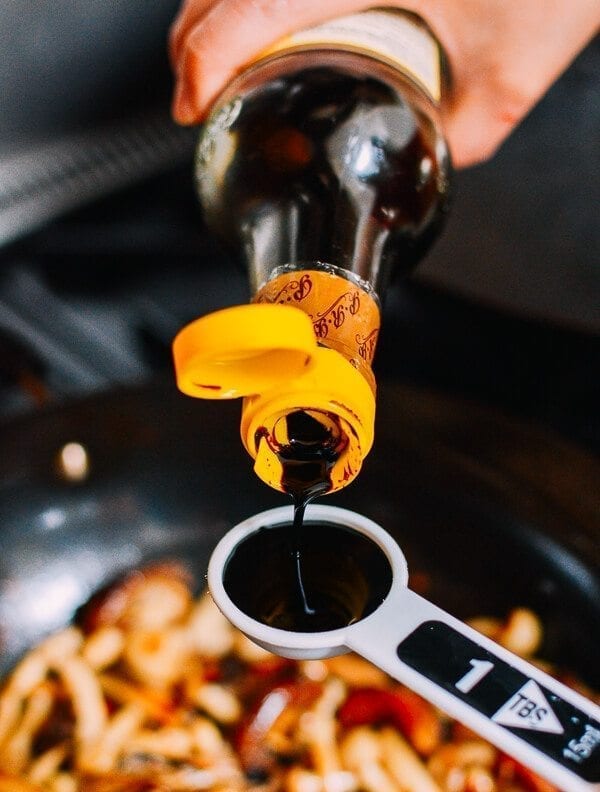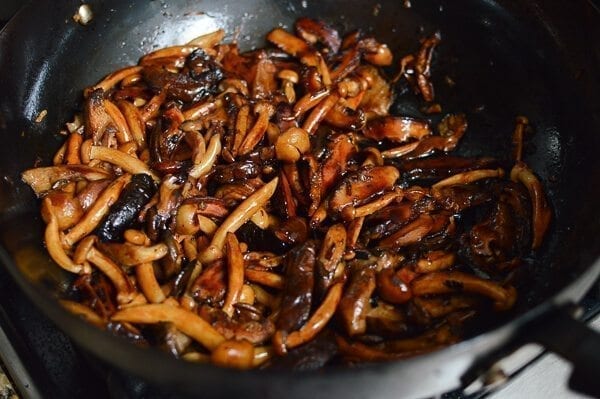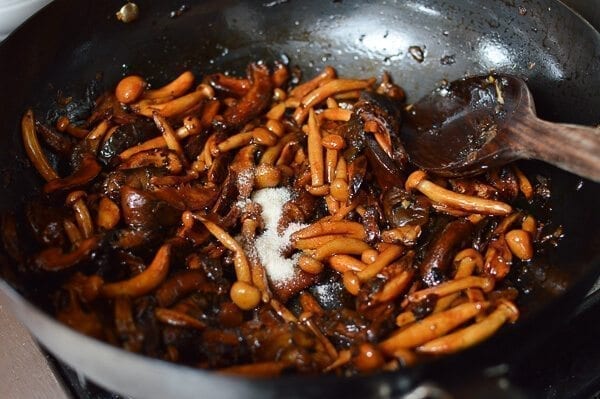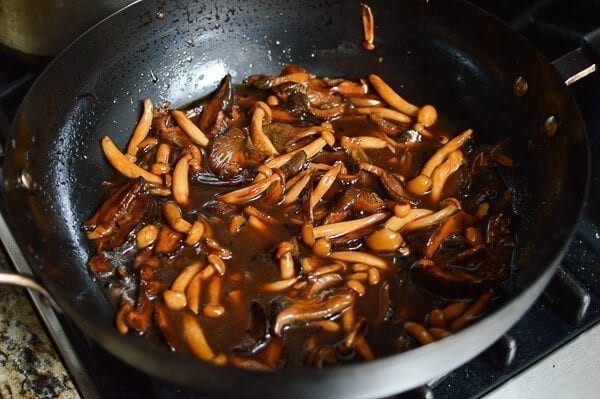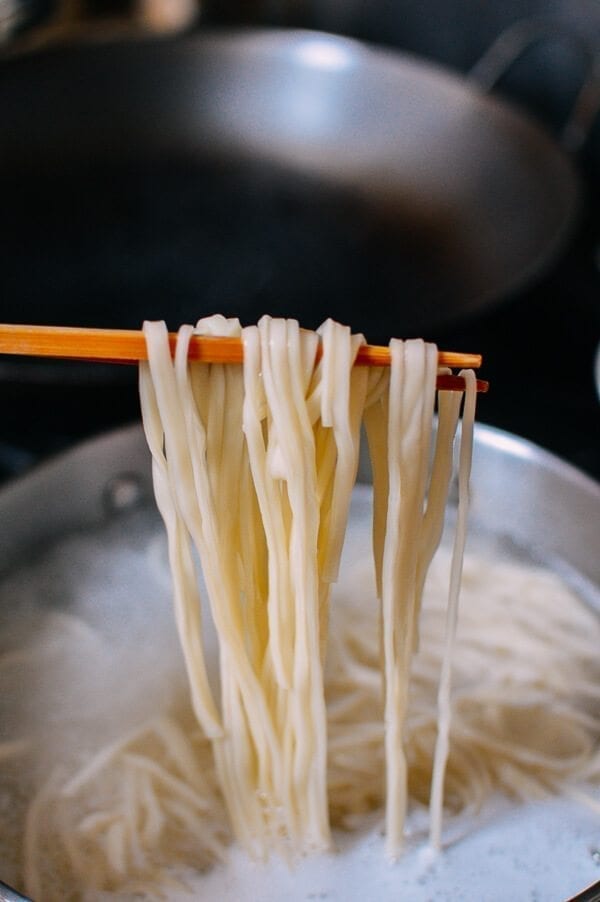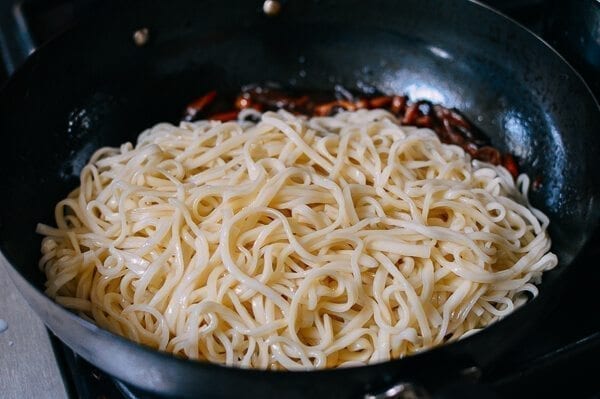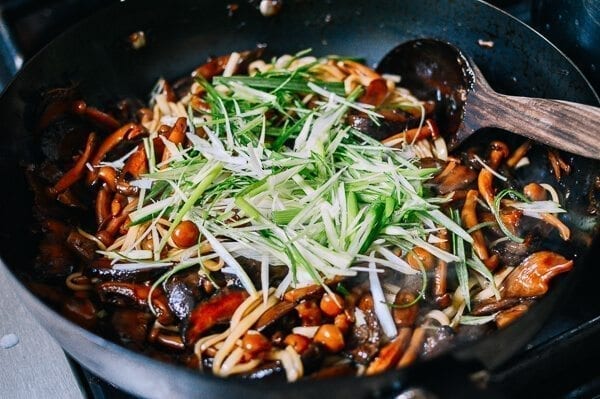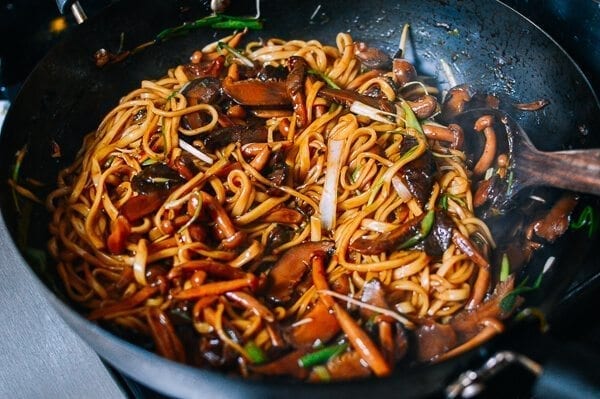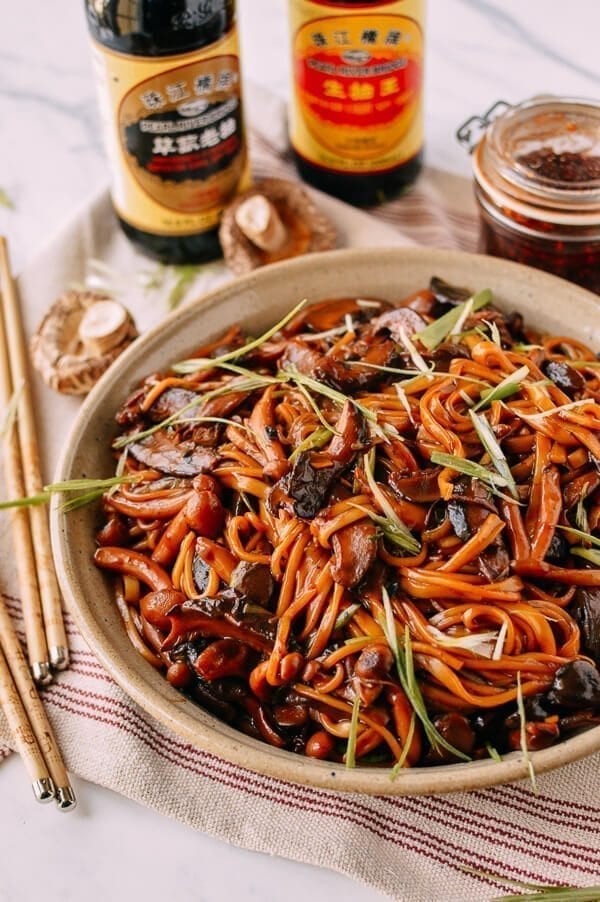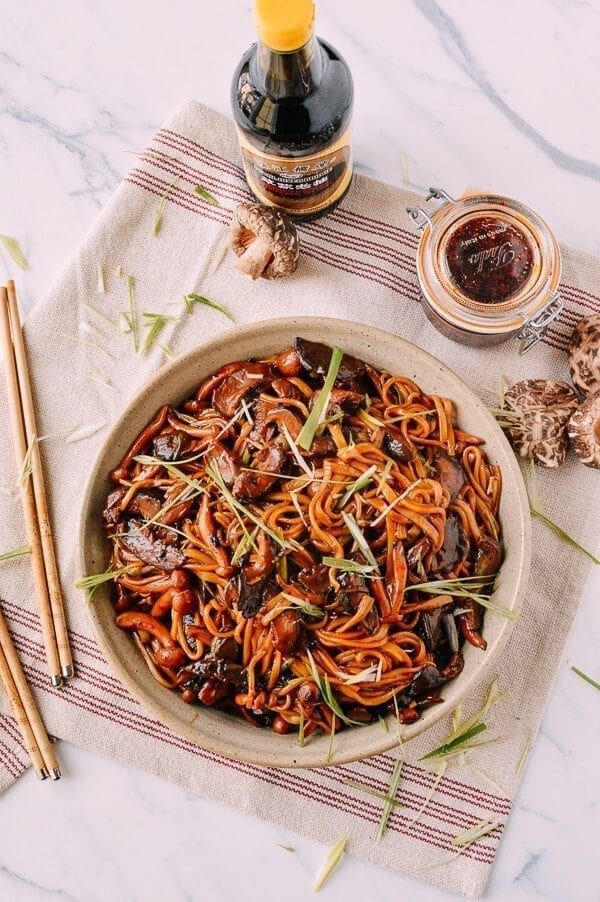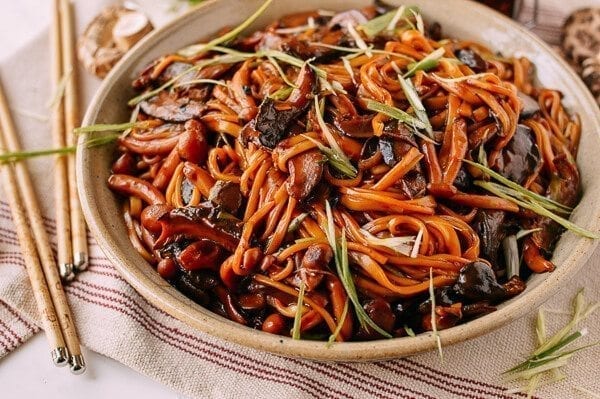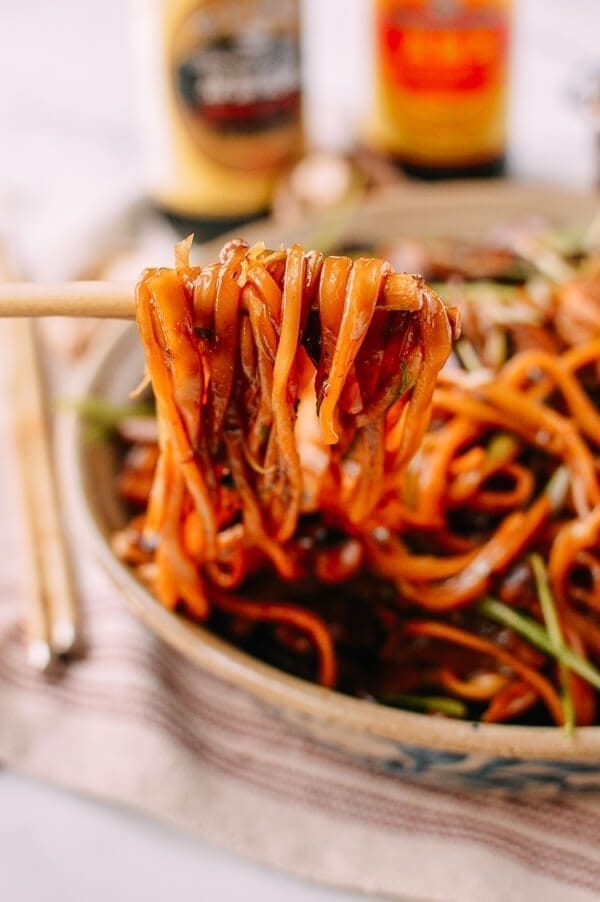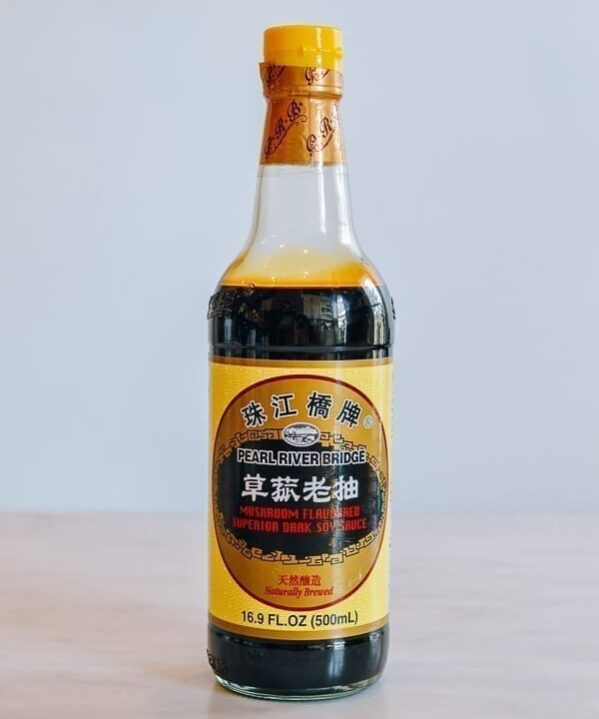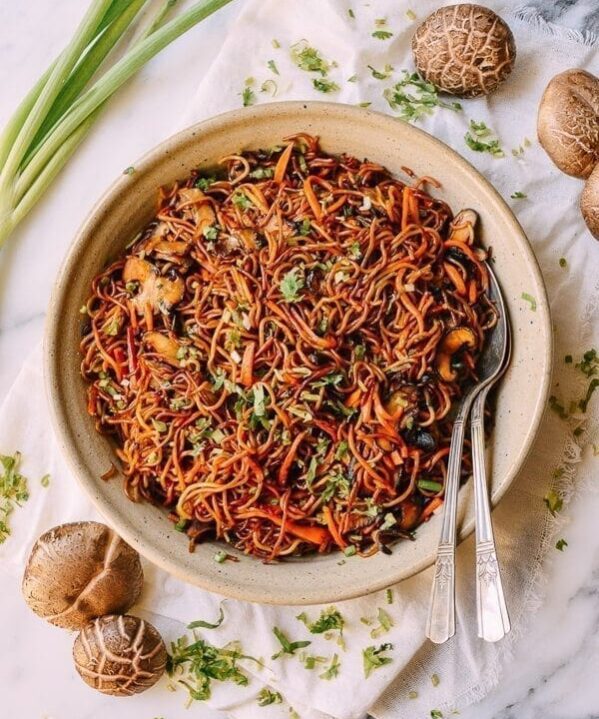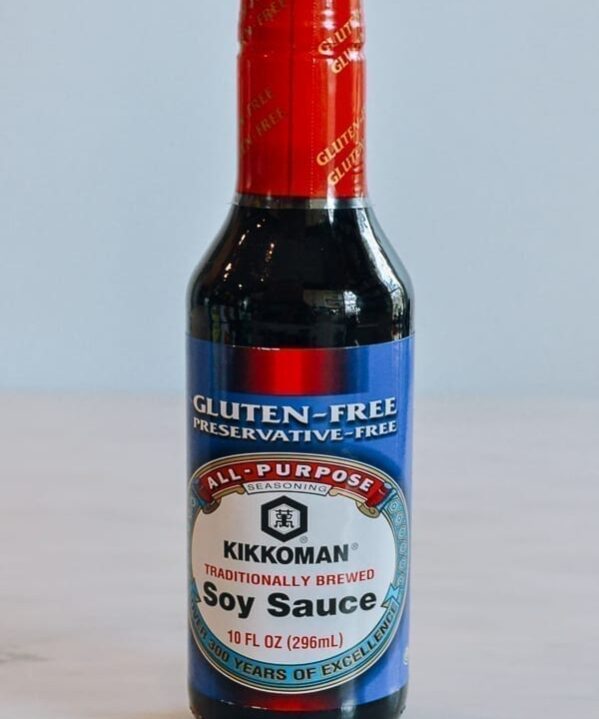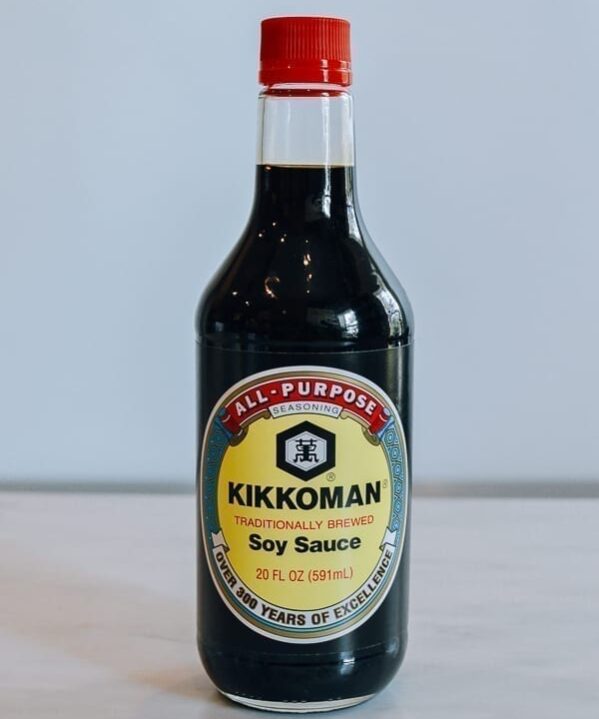We’ve partnered with Pearl River Bridge to bring you this post. Enjoy!
These Soy Sauce Braised Wild Mushroom Noodles are earthy, flavorful, rich, and savory, all with the benefit of being totally vegan! Yes, that rarest of times has come again, where we have a great vegan recipe to share with you all.
Usually, aside from the Buddhist monks, Chinese people love their meat, and it can be hard to find a completely vegan recipe. But this is one that even we meat lovers really enjoyed.
Braising in Chinese Cuisine
When it comes to many of our favorite authentic Chinese recipes, “braised” is a word that we use often. There are Chinese words and phrases like 红烧 (hong shao) meaning “red-cooked” or “red braised,” and 卤 (lu), 焖 (men), and 炖 (dun), all meaning “braised.” Braising times can vary from just 10 to 15 minutes to a few hours, depending on the dish.
Other than time, the most important ingredient in Chinese braised dishes is usually soy sauce. There are two main kinds:
- Light soy sauce (生抽酱油): A thinner, saltier soy sauce that heightens the flavor of dishes.
- Dark soy sauce (老抽酱油): A more viscous, darker sauce that enriches the color of dishes.
This pair goes hand-in-hand for a wide variety of Chinese braises.
Buying the Right Soy Sauce
Now, when it comes to buying soy sauce, not all brands are created equal! We often get questions from readers as to which sauce brands we use in our cooking, and after many years, we’ve settled on using Pearl River Bridge.
A dash of their Superior Light Soy Sauce adds so much flavor to a stir-fry or braise, without making it overpowering or too salty. Pearl River Bridge Mushroom-flavoured Superior dark soy sauce, on the other hand, is intense and rich, and a little bit really enhances the color of a dish beautifully.
This could be why some frustrated readers complain that their Shanghai Style Braised Pork Belly does not have the rich red color in the picture. Starting with the right ingredients is often the solution to most cooking woes! You can get Pearl River Bridge regular dark soy, but in this recipe, we actually used the Pearl River Bridge Mushroom Flavored Superior Dark Soy Sauce, because, well, it’s a mushroom-y recipe!
Okay, class over!
Recipe Notes & Tips
Let’s get on with the recipe for these Braised Wild Mushroom Noodles. Other than the importance of soy sauces, another consequential step is to caramelize the mushrooms before braising, or they will taste rubbery.
Feel free to use any combination of mushrooms. (Just remember––there’s no need to caramelize wood ear mushrooms if that’s one of the mushrooms you select.)
Some other tips to keep in mind while you’re making these Braised Wild Mushroom Noodles:
- A couple teaspoons of oyster sauce will help boost the flavor even more, but it’s an optional addition if you’d like the recipe to remain vegan.
- I used 1½ pounds of fresh noodles. If you are using dried noodles, you will need about ¾ pound by weight.
- Remember to salt to taste at the very end, after you’ve added the noodles. Too much salt in the sauce during the braising process will cause the mushrooms to be too salty.
Recipe Instructions
If you’re using dried shiitake mushrooms, wash them a couple of times to get rid of any dirt first. Then soak them in 2-3 cups of hot water for up to 3 hours until they are completely re-hydrated. Squeeze the water out of the rehydrated dried shiitake mushrooms, then slice them thinly. Remember to save the mushroom soaking liquid!
Next, quickly rinse the fresh oyster mushrooms and beech mushrooms under running water. Spin off any extra water using a salad spinner.
Heat the oil in a wok or thick-bottomed pot over medium heat. Add the chopped shallots and white parts of the scallions.
Cook for a minute or two until the shallots turn translucent. Now turn up the heat to high and add in all of the mushrooms, and spread them evenly across the wok.
Turn up the heat and let cook for a couple of minutes before stirring. When caramelizing mushrooms, the key is NOT to stir them too much and keep a steady heat to cook off any water in the mushrooms. Only stir when one side is browned slightly, and repeat the searing process until all of the mushrooms are browned and any liquid in the pan has been cooked off.
Turn the back down to medium, and add the dark soy sauce…
…light soy sauce, the sugar, and 2½ cups of liquid—the mushroom water and fresh water combined. Cover and simmer for 20 minutes.
In the meantime, boil a large pot of water to cook the fresh wheat noodles according to the package instructions. Once you’ve cooked the noodles, drain and set aside.
After 20 minutes (there should still be a good amount of sauce in the pan), add the noodles…
…along with the sesame oil, and the julienned green parts of the scallions.
Toss everything together so the noodles get fully coated in the mushroom sauce.
Salt to taste and serve your braised mushroom noodles with chili oil, chiu chow sauce, or your choice of spicy condiment on the side.
Soy Sauce Braised Wild Mushroom Noodles
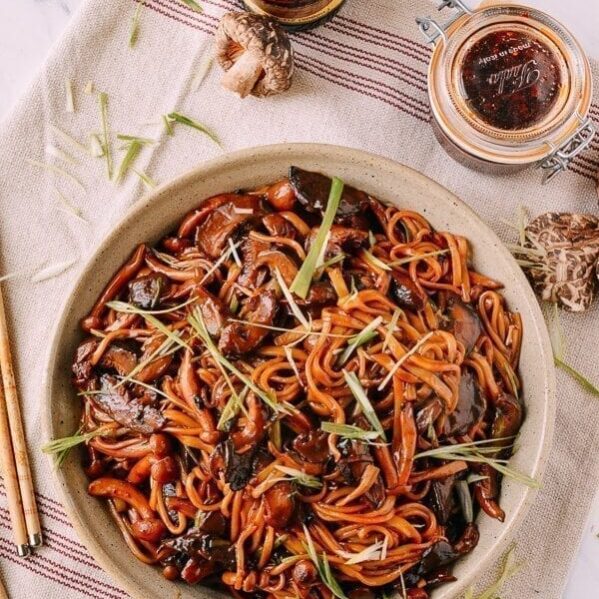
Ingredients
- 6 large dried shiitake mushrooms
- 8 ounces oyster mushrooms
- 8 ounces beech mushrooms
- 3 tablespoons oil
- 4 shallots (finely chopped)
- 3 scallions (with the white parts chopped and the green parts julienned)
- 1½ tablespoons dark soy sauce (preferably mushroom flavored)
- 3 tablespoons light soy sauce (or low sodium soy sauce)
- 1 tablespoon sugar
- The dried mushroom-soaking water (plus enough water to yield 2½ cups of liquid)
- 1 1/2 pounds fresh wheat noodles (or other noodles of your choice)
- ½ teaspoon sesame oil
- Salt (to taste)
Instructions
- If you’re using dried shiitake mushrooms, wash them a couple of times to get rid of any dirt first. Then soak them in 2-3 cups of hot water for up to 3 hours until they are completely re-hydrated. Squeeze the water out of the rehydrated Shiitakes, then slice them thinly. Remember to save the mushroom soaking liquid!
- Next, quickly rinse the fresh oyster mushrooms and beech mushrooms under running water. Spin off any extra water using a salad spinner.
- Heat the oil in a wok or thick-bottomed pot over medium heat. Add the chopped shallots and white parts of the scallions. Cook for a minute or two until the shallots turn translucent. Now turn up the heat to high and add in all of the mushrooms, and spread them evenly across the wok.
- Turn up the heat and let cook for a couple of minutes before stirring. When caramelizing mushrooms, the key is NOT to stir them too much and keep a steady heat to cook off any water in the mushrooms. Only stir when one side is browned slightly, and repeat the searing process until all of the mushrooms are browned and any liquid in the pan has been cooked off.
- Turn the back down to medium, and add the dark soy sauce, light soy sauce, the sugar, and 2½ cups of liquid––the mushroom water and fresh water combined. Cover and simmer for 20 minutes.
- In the meantime, boil a large pot of water to cook the noodles according to the package instructions. Once the noodles are cooked, drain, and set aside.
- After the mushrooms have been braising for 20 minutes (there should still be a good amount of sauce in the pan), add the cooked noodles, the sesame oil, and the julienned green parts of the scallions. Toss everything together so the noodles get fully coated in the mushroom sauce. Salt to taste and serve with chili oil, chiu chow sauce, or your choice of spicy condiment on the side.
nutrition facts
For more on Pearl River Bridge, check them out on Facebook and Twitter!
